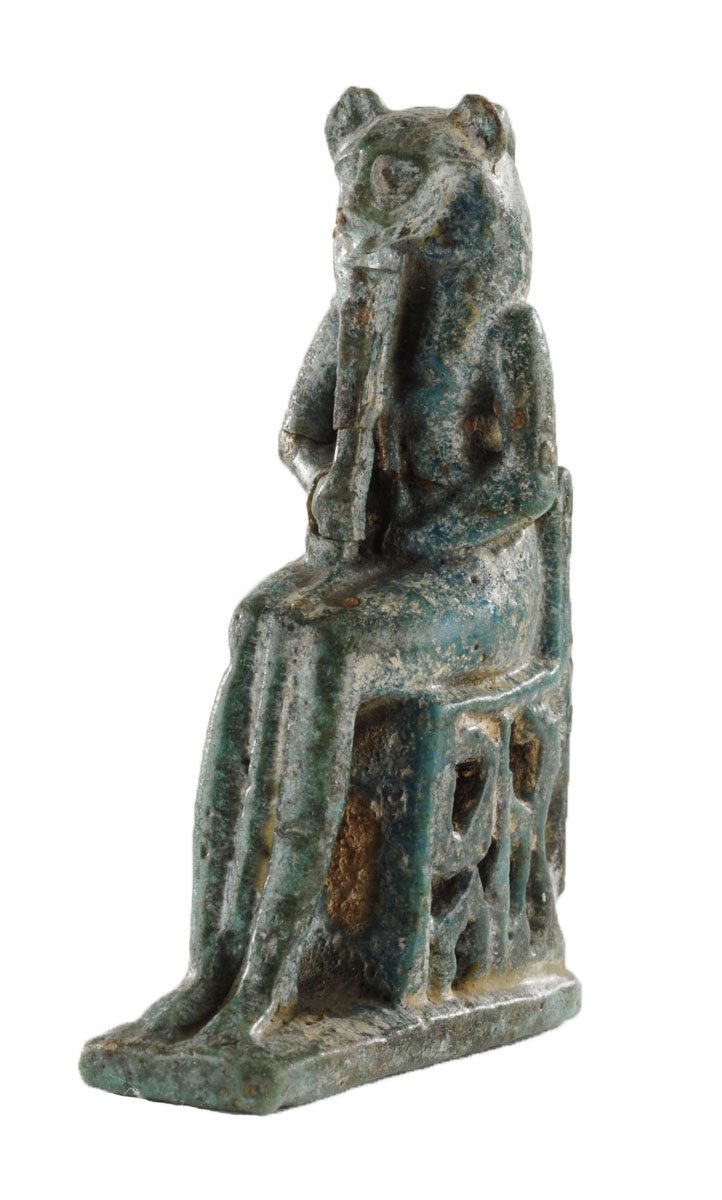
The Goddess Sekhmet Seated on a Throne
Egyptian Art
| Place of production | Saqqara (?), Egypt |
|---|---|
| Date | 7–6th century B.C. |
| Object type | tomb equipment |
| Medium, technique | Egyptian alabaster (travertine), paint |
| Dimensions | jar: 38.4 x 76 cm |
| Inventory number | 51.2105 |
| Collection | Egyptian Art |
| On view | Museum of Fine Arts, Basement Floor, Ancient Egypt, Funerary beliefs |
The canopic jar dating from the Saite Dynasty formed part of the grave goods of a general, Padihoremheb. The practice of removing internal organs of the deceased was deemed integral to preserving the physical body’s integrity in the afterlife and thus regaining the various life functions after death began in the Old Kingdom. Inscriptions and the lids then uniformly shaped like human heads appeared on the vessels symbolizing the four Sons of Horus from the early Middle Kingdom. The new type of canopic jar sets adapted to the changed, individualized iconography of the Sons of Horus emerged only during the New Kingdom. The shapes of the lids faithfully followed the different head-shapes of the Sons of Horus, which by that time had become distinguished from one another, taking the form of a human- (Imsety), ape- (Hapy), jackal- (Duamutef) and falcon- (Qebehsenuef) head. Each deity was identified with the actual internal organ, and at the same time, they were responsible for the protection of these organs. On a higher level, the Sons of Horus were also placed under the protection of different goddesses.
The now lost tomb of Padihoremheb was presumably situated in Lower Egypt, in the vicinity of the Saite tombs in Saqqara. Together with another piece of the set, the Budapest canopic jar was probably given as a diplomatic gift to the Austrian oriental enthusiast, diplomat, poet, and collector Count Anton Prokesch-Osten in 1833 when he visited Muhammad Ali, the viceroy of Egypt. The third piece of the set, which is today in Tallin, can be traced to the Russian Count Orloff, who in the same year was on a similar diplomatic mission in Egypt. It is assumed that it was there and then that the third jar, the one with an ape-headed lid, went into his possession from the Collection of Giovanni d’Anastasi, the Swedish consul to Alexandria. The fourth piece was added to the set only at the end of the millennium: it turned up in the collection of the Pushkin Museum in Moscow.
This record is subject to revision due to ongoing research.